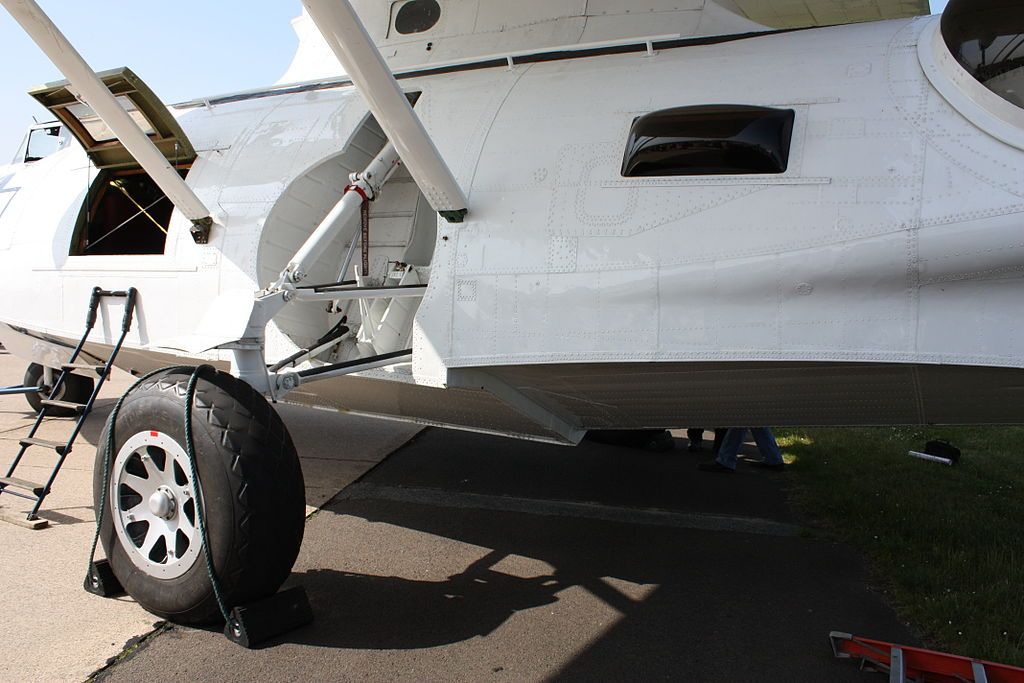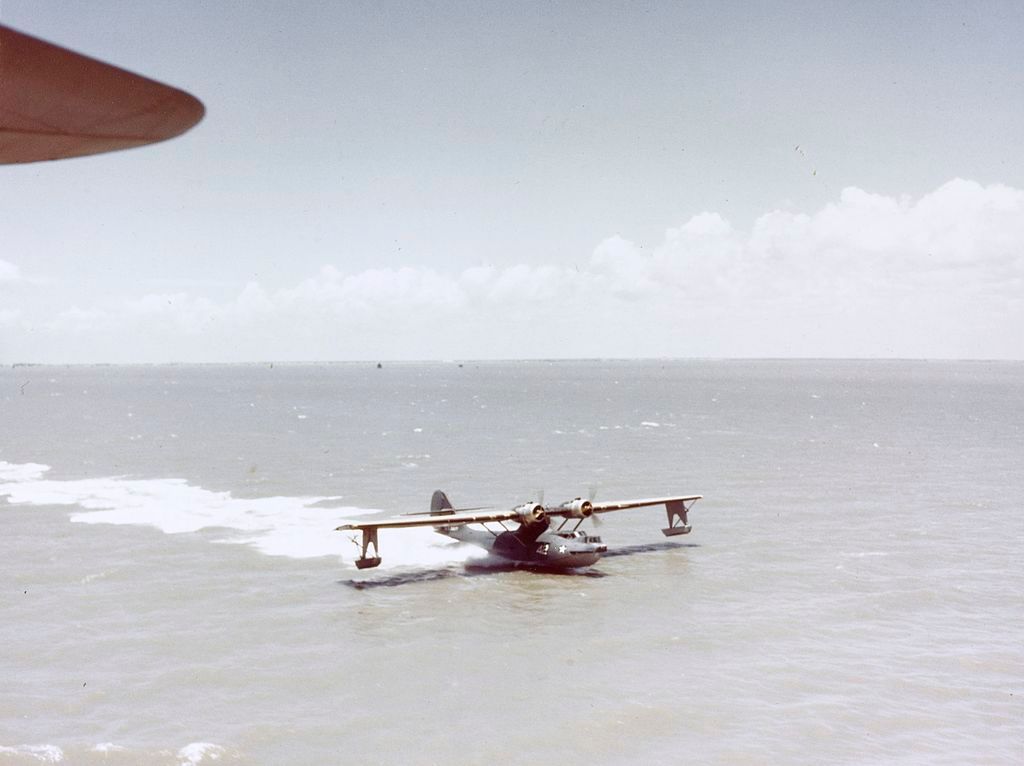Seventy-four years ago, in 1948, four armed Chinese men hijacked a Catalina flying boat operated by the Macau Air Transport Company. The incident resulted in the aircraft crashing into the Zhujiang River estuary, killing all but one of the 27 people onboard. This was the first recorded hijacking of a commercial aircraft in civil aviation history. However, the dramatic story was to have a bizarre twist at its conclusion.
Background
Following the end of the Second World War, and having suspended its operations since December 1941, the Macau Air Transport Company (a subsidiary of Cathay Pacific Airways based in the former British colony of Hong Kong) resumed operations carrying both passengers and gold bullion between Hong Kong and Macao, a distance of 23 miles (37 kilometers).
As there was no land-based airport located in the Portuguese colony of Macao (also often spelled ‘Macau’) at that time, the airline operated two PBY Catalina flying boats chartered from the parent company to operate the route, hence providing an ideal solution to the lack of a hard runway on the island.
One of the planes (registered VR-HDT) operating the 20-minute journey from British Hong Kong to the Portuguese colony of Macao was given the name ‘Miss Macao.’
During the immediate post-war period, there remained a general embargo on the trading of gold. However, Macao developed as it was the only permitted gold market in the Far East. As a result, many business people carried gold and large sums of money between Macao and Hong Kong, making the route a prime target for possible piracy and other crimes.
Image: Google Earth
The fateful flight
On July 16th, 1948, Miss Macao departed from Macao with 23 passengers onboard. This included 12 Chinese passengers, others from the United States, United Kingdom, Russia, and Portugal, along with four crewmembers. This eclectic group included a millionaire gold bullion trader, a well-known horse racing jockey, an executive from The Coca-Cola Company, and the ringmaster of a famous traveling circus.
Upon its failure to arrive after its scheduled flying time of 20 minutes, and with no radio communication from the aircraft in the meantime, the airline’s staff in Hong Kong started to become concerned for both the aircraft and all those onboard.
While the airline staff waited to receive further news about the aircraft, a fisherman spotted an airplane (which later turned out to be Miss Macao) flying in a northerly direction before it suddenly changed direction, and then dove nose-first into the sea.
The fisherman headed for the crash site, where he proceeded to rescue a single survivor from the wreckage who was later taken to a local hospital in Macao for treatment.
What happened to Miss Macao?
Until then, hijacking had not existed in the form we know today. Indeed, rather than ‘hijacking,’ acts against aircraft had generally been referred to by antiquated laws as ‘air piracy.’ In the early days of hijacking planes, the primary motive for hijackers was to rob or hold passengers and aircraft for ransom. This first hijacking involving Miss Macao was no different.
Onboard the aircraft on July 16th, 1948, were four Chinese nationals whose sole intent was to hijack the plane and its passengers and to hold them to ransom. They expected that the airline would pay handsomely to get its aircraft and crew back, plus the families of the wealthy individuals onboard would do likewise to have their loved ones returned safely.
The team of hijackers knew that among the passengers that day would be Huang Songping, a wealthy Hong Kong citizen who operated gold businesses in both Hong Kong and Macao and often carried gold between the two locations.
They planned to hijack the flight and fly the plane to Xiao Chikan, a small village in Guangdong province, China, where they would rob the wealthy passengers of their gold. One of the four was a qualified pilot tasked with taking the controls and flying the aircraft to its alternative destination.
Two of the hijackers sold their houses and land to buy tickets to fly on the air service, which they knew that Huang Songping would also be traveling on that day.
A lack of airport security
Airport security was nowhere near as sophisticated in 1948 as it is today, and metal detectors were not implemented for airport security screening until the 1960s – their widescale introduction came after a string of aircraft hijackings around the world. Therefore, the only security measures for Miss Macao’s flight that day were simply the observation of passengers by airport staff and hand searches if any passenger displayed any suspicious behavior.
The four hijackers were well-prepared for possible security checks. One of them tied three revolvers to their inner thighs with black yarn straps, and bullets were hidden in the hollowed-out heel of one of their shoes.
A few minutes after taking off, two of the hijackers entered the cockpit with a pistol. One of them ordered the pilots to surrender in English, although the captain (27-year-old American Dale Cramer) refused. Meanwhile, in the rear of the cabin, an American passenger held onto one of the other hijacker’s guns with one hand while punching him in the face with the other.
The two hijackers upfront came down from the cockpit and shot the American, ordering the rest of the passengers to raise their hands.
With the hijackers vacating the cockpit, the captain pulled sharply back on the controls, hoping to throw the hijackers off-balance as the plane rolled. Miss Macao’s Australian co-pilot (Ken McDuff) found a mooring pole and struck one of the hijackers on the head. After he fell to the floor, one of the others in the cabin turned and fired several shots toward the cockpit, fatally injuring both pilots.
As the co-pilot slumped over the controls, Miss Macao entered a steep dive and crashed into the Zhujiang River estuary. One of the hijackers in the rear of the plane, Huang Yu, managed to grab a lifejacket and escape the aircraft as it impacted the water’s surface. Huang Yu was rescued by the local fisherman who was first on the scene.
Just one survivor
The local police interviewed Huang Yu in the hospital. He told the police that, as the plane approached Jiuzhou, the aircraft exploded, and he lost consciousness during the aircraft’s rapid descent. Huang also told the police that he had allegedly traveled to Macao to look for a job in recent years but was still unemployed.
He claimed he later met a man named Zhao (one of the other hijackers) who had promised to find him work in Hong Kong and had bought Huang’s ticket for him. However, when the police asked him where he was going to work in Hong Kong, Huang Yu’s reply was simply, “I don’t know.”
The police found Huang’s explanation to be implausible. Furthermore, Miss Macao was a well-designed, robust, and well-built aircraft. Even if both engines had failed simultaneously, it could have glided down to perform a water landing.
The police were also perplexed as Huang Yu was wearing a life jacket when rescued. Witnesses also reported hearing noises resembling gunshots as the aircraft flew over them before it crashed.
The investigation
The wreckage of Miss Macao was eventually recovered by the police and sent away for further analysis. Upon inspection, the police discovered several clearly visible bullet holes on the aircraft’s interior walls. Two bullet cases and one unfired bullet were also found, which revealed that two different pistols had been involved in the incident.
The autopsy reports stated that most passengers were wealthy members of the upper classes, except three unidentified Chinese men whose backgrounds were unknown. Of these three, two bodies had been recovered from the water, although no one claimed them. As Huang Yu had seemingly lied about the explosion onboard Miss Macao and could not provide any plausible reason for travel, the police were also suspicious about his role in the incident.
The Macao police issued false information to assist the investigation, saying that the airline would pay compensation to the deceased’s families and that relatives were required to register and identify the corpses.
Following the release of this information, a woman came forward claiming to be a relative of one of the unknown Chinese passengers. She divulged that her relative had, along with three other men, stayed with her for one night before the four men traveled to Hong Kong with just a briefcase between them.
The police now had suspicions that the four had been part of a gang intending to hijack the aircraft – they just needed Huang Yu to provide a confession.
Obtaining the Confession
The police used hidden recorders in his hospital room to obtain a confession from Huang Yu. They then arranged for a police detective to be positioned in the bed next to him, posing as the victim of a car accident. However, Huang Yu did not reveal any further information.
Changing their strategy to procure a confession, the police arranged for a man to enter the ward pretending to visit an injured relative. After seeing Huang Yu, the man pretended to know Huang. He took out what appeared to be a Portuguese newspaper and stated to Huang Yu that the other three hijackers had been rescued, arrested, and interrogated.
The man told Huang that the others had identified him as the gang’s leader and the person that had fired the fatal shots on the plane. Huang Yu vehemently denied this to be the case, explaining his actual role in the plot. The police, having just received a complete account of the failed hijacking, subsequently arrested Huang Yu.
A bizarre ending to the story
Having discovered the bullets, bodies, and aircraft wreckage, along with a full confession from the sole…
Read More:The World’s First Commercial Airline Hijacking
2022-11-13 14:30:00

.jpeg)
.jpg)
.jpg)

.jpg)

.jpg)